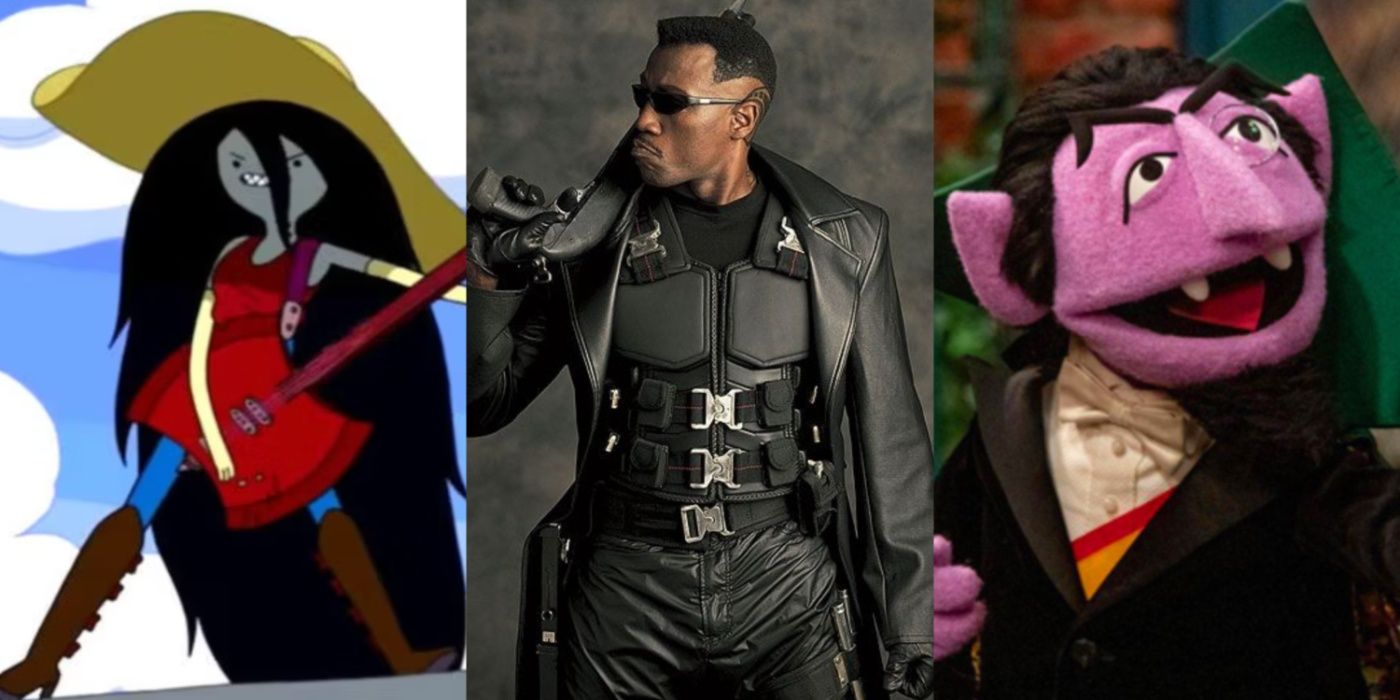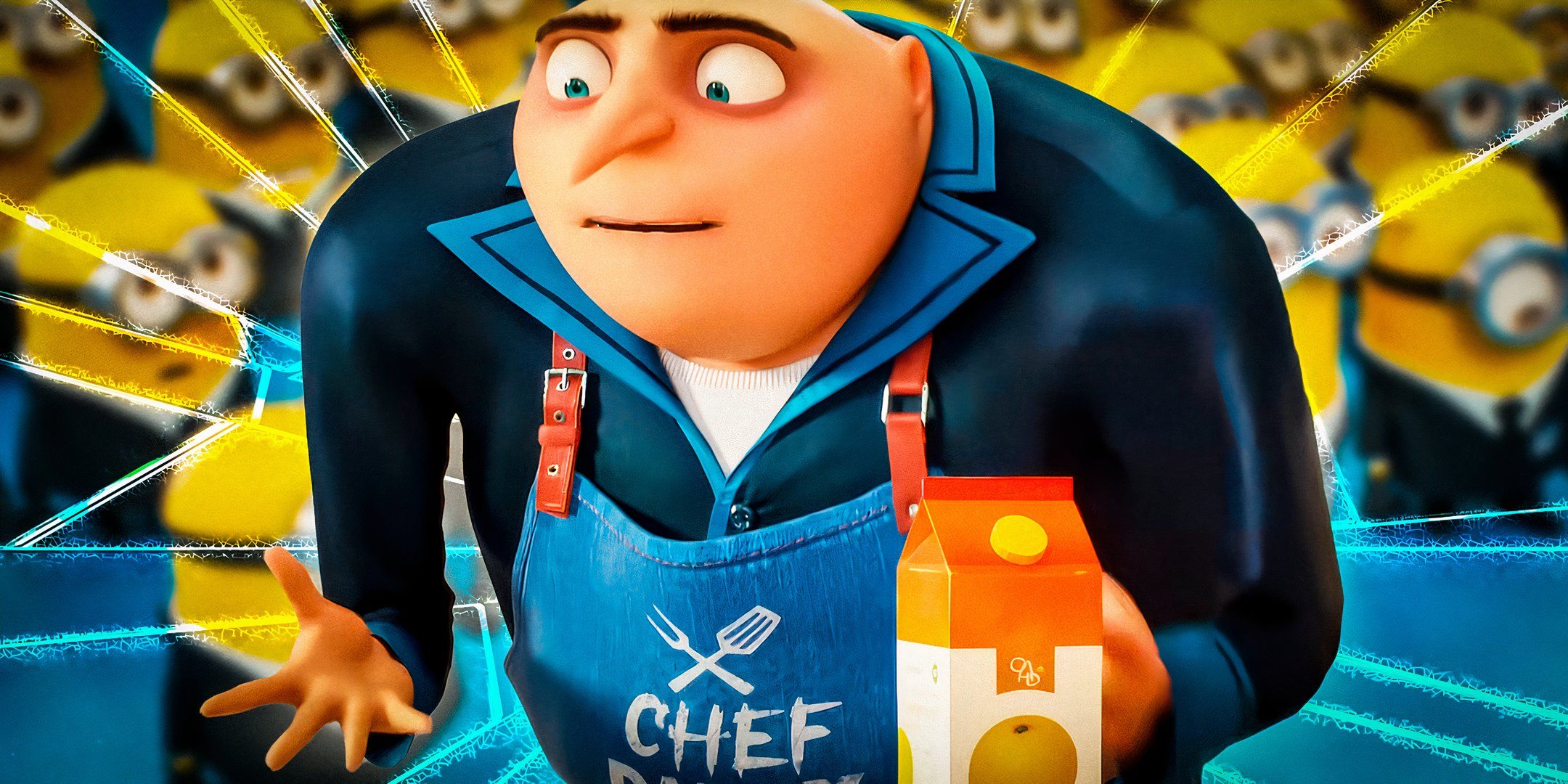Fans of Japan’s Super Sentai TV series (later adapted for the United States as the famous Power Rangers) may be shocked to learn that Marvel’s Spider-Man had a Japanese produced TV show in the late 1970s, shaped by the success and style of the Power Rangers. Even more amazing, this Japanese Spider-Man (or Supaidāman) established the Power Rangers’ most popular trope: the giant mecha robot that battles a giant monster in each episode’s climax.
Now that Supaidāman will return in Into the Spider-Verse‘s sequel, there’s no better time to look back at this unique re-imagining of Marvel’s wall crawler, discover how he influenced the Power Rangers, and speculate on how he might interact with other alternate Spider-Men, women, and pigs.
The Origin of Japan’s Spider-Man
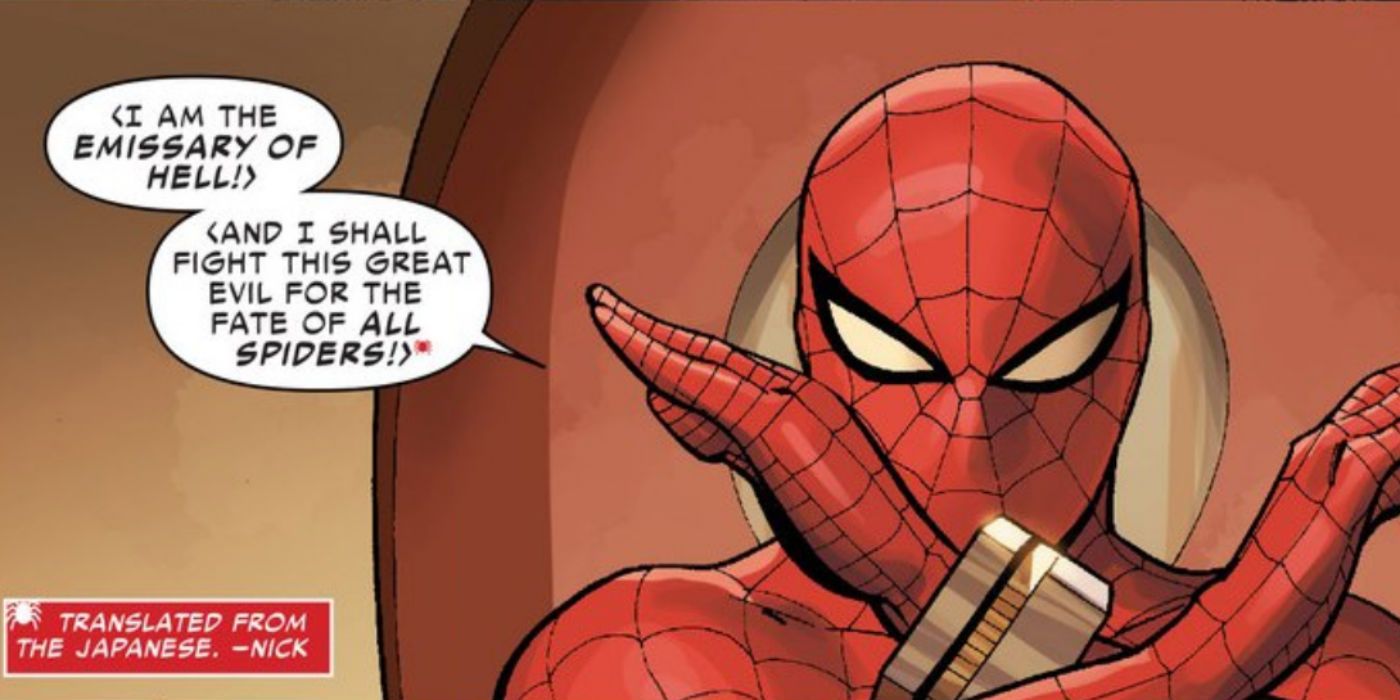
In 1978, Spider-Man got the chance to appear on live action Japanese TV when Marvel entered into a licensing agreement with Toei Company, the Japanese business that started the Super Sentai franchise. Under this agreement, both Marvel and Toei could use each other’s licensed properties. Marvel took robots from Toei’s anime shows and adapted them into a comic book of the Shogun Warriors toyline. Toei, however, had bigger plans.
Having achieved success with two Super Sentai TV series, Himitsu Sentai Goranger and J.A.K.Q. Dengekitai, Toei decided to create its own version of Marvel’s Spider-Man. Merging elements from its Super Sentai shows with Spider-Man’s classic costume and powers, Toei developed Supaidāman, the self-proclaimed “Emissary of Hell!” While radically different from America’s Spider-Man, this alternate Spidey proved a huge hit with Japanese audiences and enjoyed a 41-episode run as well as one theatrically released movie.
The Japanese Spider-Man
Toei’s Supaidāman is not Peter Parker, but a motorcycle racer named Takuya Yamashiro. When Takuya investigates telepathic cries from an unseen alien, he is attacked and gravely injured by Professor Monster’s alien Iron Cross army who also murder his father Professor Yamashiro. Falling into a cave, Takuya encounters Garia, a warrior from Planet Spider (yes, really), who has been calling him. Garia saves Takuya with a blood transfusion, giving Takuya spider-like powers, before turning into a telepathic spider that guides Takuya. To protect Earth from Professor Monster, Takuya dons Garia’s Spider-Man costume (aka “The Spider Protector”) and uses his alien gadgets to defend the planet as Supaidāman.
Like Peter Parker, Supaidāman has super strength and can crawl on walls. He has multiple “spider-senses” that can detect the Iron Cross Army, give him X-ray vision, night vision, future vision, and a heightened sense of smell. He can even… talk to spiders (yes, really). To top it off, his alien “Spider Bracelet” hides his costume and shoots web lines (or “Spider String”). However, this Spider-Man doesn’t just get around by web slinging – since his bracelet also summon the Marveller, Garia’s alien spacecraft, which contains a flying car, the Spider Machine GP-7.
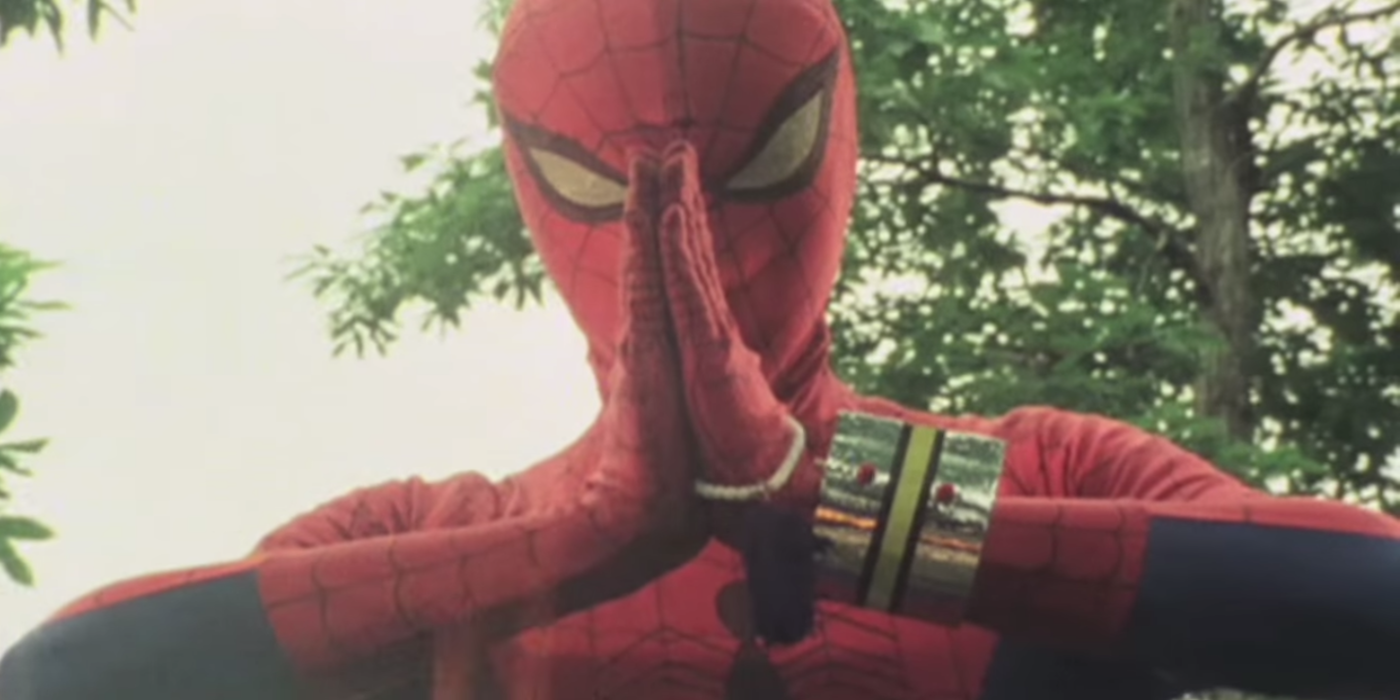
While Takuya Yamashiro is a very different person from Peter Parker, he does share some of his American counterpart’s tropes. Since he spends so much time secretly fighting aliens, his motocross career suffers and he has to make money assisting his girlfriend Hitomi – a freelance photographer. Like Parker, Takuya is also considered a coward and weakling since he runs away every time aliens attack and Supaidāman needs to leap into action.
Most Supaidāman episodes follow a basic plot familiar to all Power Ranger shows. Professor Monster sends his Iron Cross Army creatures for Takuya to beat up. Supaidāman then battles Professor Monster’s monster-of-the-week – until the creature grows to gigantic size. This requires Supaidāman to call upon his greatest weapon – Leopardon, his giant mecha robot!
The Japanese Spider-Man’s ‘Leopardon’
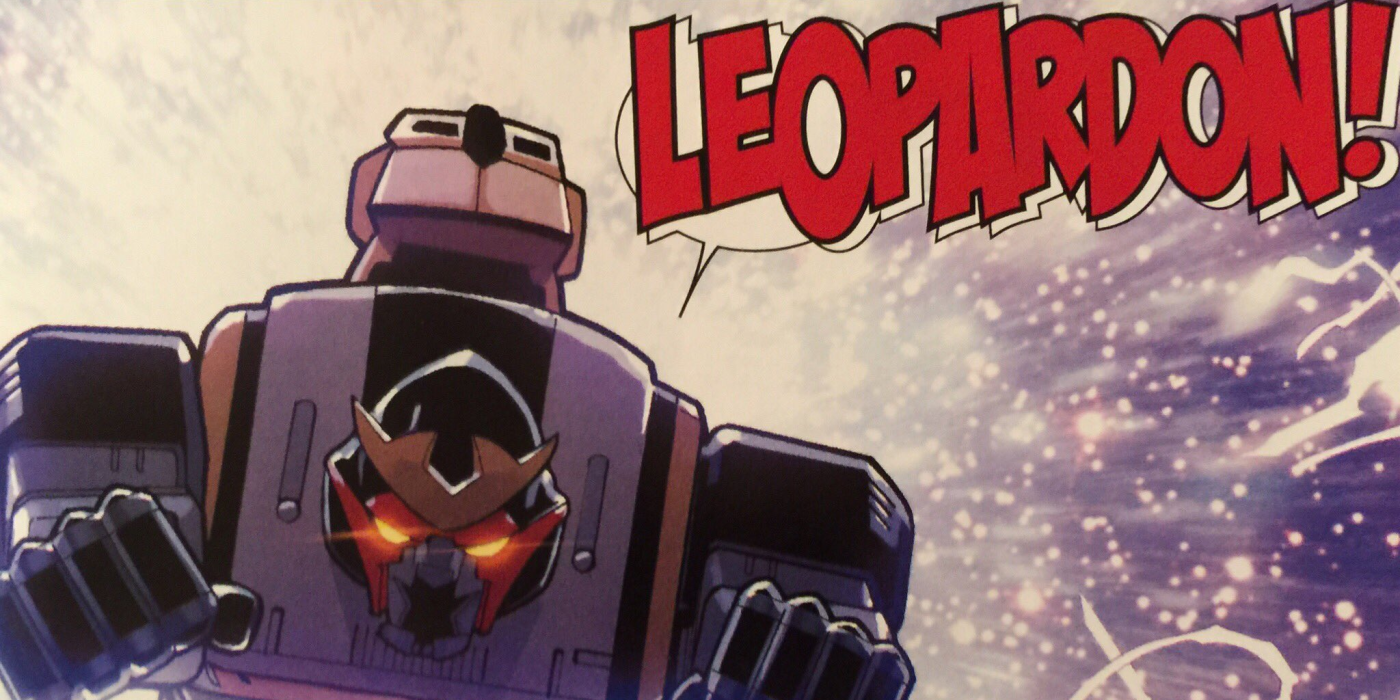
Toei’s earlier Super Sentai series both showed their Power Rangers battling only human-size enemies. With their new Spider-Man show, however, Toei came up with the idea to have Supaidāman’s Marveller spacecraft transform into the 60-meter tall robot Leopardon (named for the leopard-like head on Marveller’s hull). By piloting Leopardon, Supaidāman could take on Professor Monster’s giant kaiju beasts using the unbeatable Sword Vigor.
Where later Super Sentai and Power Rangers series showed robots sustaining damage and even getting destroyed in battle, Toei had yet to establish any limits for its first giant robot. This meant Leopardon never took any real damage in a fight. Moreover, the Leopardon suit was stolen halfway through the show’s production, requiring the show to reuse old footage in fight scenes. This led to scenes where Leopardon casually hurled Sword Vigor immediately at the giant monster and blew it up in one strike without bothering to engage in a lengthy battle. Ironically, these production problems made Leopardon both the first and most powerful mecha robots in Super Sentai/Power Rangers history!
Regardless, Leopardon became one of the show’s breakout successes and sold well as an action figure. Because of this, Toei Company began introducing giant robots into all its subsequent Super Sentai series. So, while he may have fought alone in his series instead of with a team, Supaidāman was essentially the first Japanese Power Ranger to use a giant mecha robot!
The Return of Supaidāman
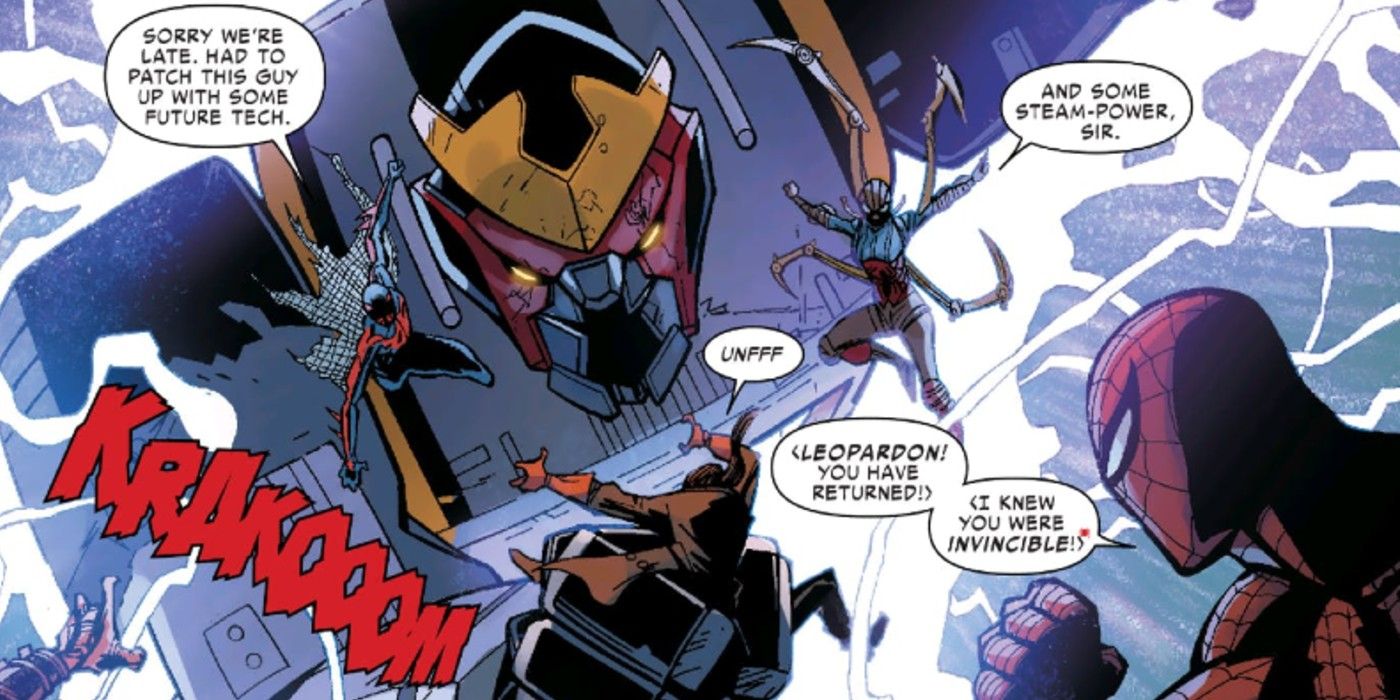
Supaidāman proved popular with American audiences as well when Marvel began re-running English-subtitled episodes of the Japanese show on its website in 2009. This likely led to Ernest Cline referencing Supaidāman in his popular 2011 science fiction book Ready Player One where the main character Wade Watts pilots a virtual reality version of Leopardon against his enemies.
In 2014, writer Dan Slott made Supaidāman a key player in Marvel’s Spider-Verse storyline. Establishing that Takuya Yamashiro exists within Marvel’s multiverse, Slott had Supaidāman team up with other alternate Spider-People and fight the spider-hunting Inheritors. To Takuya’s shock, Supaidāman’s unbeatable robot Leopardon is immediately torn apart by the Inheritor leader Solus. Fortunately, Spider-Man 2099 and Lady Spider get the robot functional for the final battle. Takuya gets a chance to indirectly settle his score with Solus in 2018’s Spider-Verse sequel Spider-Geddon when he loans Sword Vigor to Miles Morales/Spider-Man (who has been transformed into the massively powerful Captain Universe by the Enigma Force). In an epic scene of pop culture goodness, Miles hurls Sword Vigor at Solus, blowing up the Inheritor leader in one strike.
—
Given these entertaining sequences, it’s no wonder that Takuya Yamashiro’s Supaidāman has been confirmed to appear on the big screen in the Into the Spiderverse sequel. While fans can only speculate how big a role the Japanese Spider-Man will play, it’s almost a sure bet that he’ll be accompanied by his giant robot Leopardon and Sword Vigor, showing his link to two of the biggest franchises in the United States and Japan.


